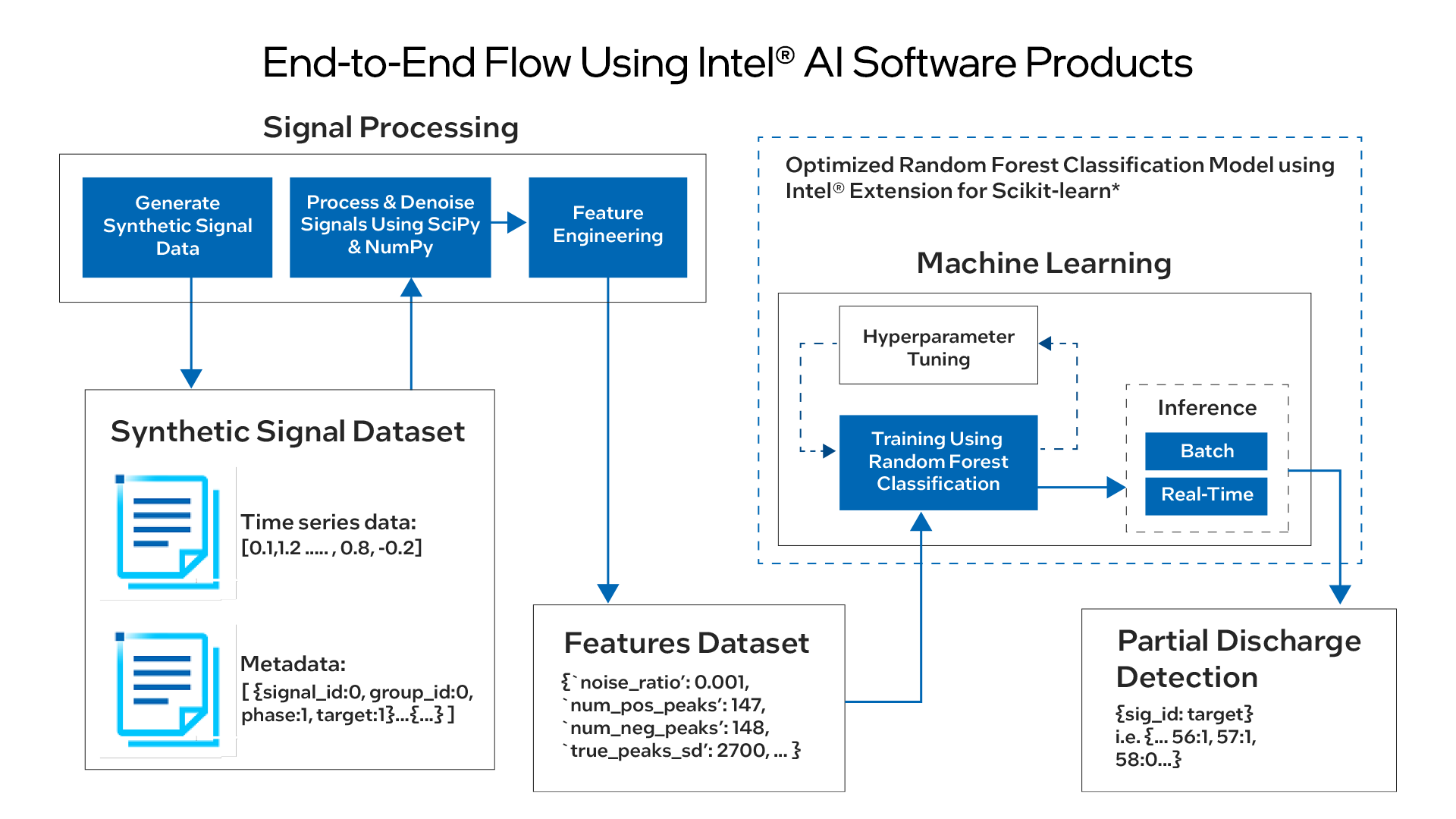Background
S&C Electric Company reports that of the manufacturers surveyed in 2018, one in four experienced a power outage at least once a month.1 These outages were not mild inconveniences; the costs were quickly rising to be boardroom-level issues. For large companies, the cost of an outage can escalate into the millions of dollars per hour of downtime. In fact, the DOE estimated in 2018 that outages were costing the US economy $150 billion annually.2
Faults in overhead electric transmission lines can lead to a destructive phenomenon called partial discharge (PD). If left unaddressed, partial discharges can eventually destroy equipment. Overhead electric transmission lines run for hundreds of thousands of miles all over the US alone, so manually inspecting the lines for damages that don’t cause an immediate outage is expensive. However, if left alone, undetected faulty lines can lead to partial discharges. Using machine learning to proactively detect partial discharges can reduce maintenance costs and prevent power outages and fires. This reference kit may assist you in developing a machine learning model to process and analyze the signals from a three-phase power supply system, used in power lines, to predict whether or not a signal has a partial discharge.
Solution
In collaboration with Accenture*, Intel developed this AI reference kit to assist in the classification of signals as having partial discharge or not. Paired with Intel® software, this kit can help utility companies to build models to identify powerlines that may have partial discharge issues. This reference kit includes:
- Training data
- An open source, trained model
- Libraries
- User guides
- Intel® AI software products

At a Glance
- Industry: Energy and utilities
- Task: Analyze the signals from a three-phase power supply system (used in power lines) to predict whether or not a signal has a partial discharge
- Dataset: Synthetic dataset of voltage signals
- Type of Learning: Supervised learning for binary classification
- Models: Random forest classification
- Output: Whether or not the signal has partial discharge
- Intel® AI Software Portfolio:
- Intel® AI Analytics Toolkit (AI Kit)
- Intel® Extension for Scikit-learn*
- Intel® oneAPI Data Analytics Library (oneDAL)
Testing Environment
Performance was tested on Microsoft Azure* Standard_D8_v5 using 3rd generation Intel® Xeon® processors to optimize the kit.
Benefits
Fault detection with signal processing is a computationally expensive process, but with optimizations and cost-efficient data collection, the advantages of detecting partial discharge earlier has the potential to save money and resources in the long run by avoiding complete outages and failures. The maintenance costs, as well as the need for extensive power line repair, may be lower if the problem is caught early enough. This reference kit implementation provides performance-optimized guidance for signal processing use cases that can be scaled across similar use cases that require random forest classification.
References
- S&C Electric Company. (April 23, 2018). S&C’s 2018 State of Commercial & Industrial Power Reliability Report (Publication No. 100-T120). https://www.sandc.com/globalassets/sac-electric/documents/public---documents/sales-manual-library---external-view/technical-paper-100-t120.pdf
- Office of Nuclear Energy (January 25, 2018) Department of Energy Report Explores U.S. Advanced Small Modular Reactors to Boost Grid Resiliency. https://www.energy.gov/ne/articles/department-energy-report-explores-us-advanced-small-modular-reactors-boost-grid#:~:text=The%20U.S.%20Department%20of%20Energy

